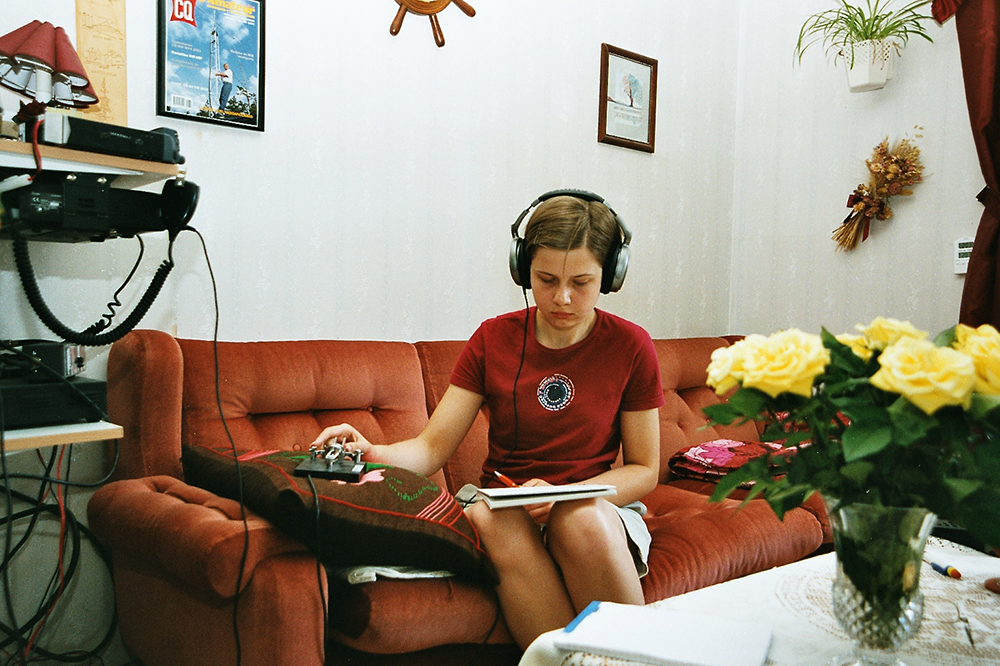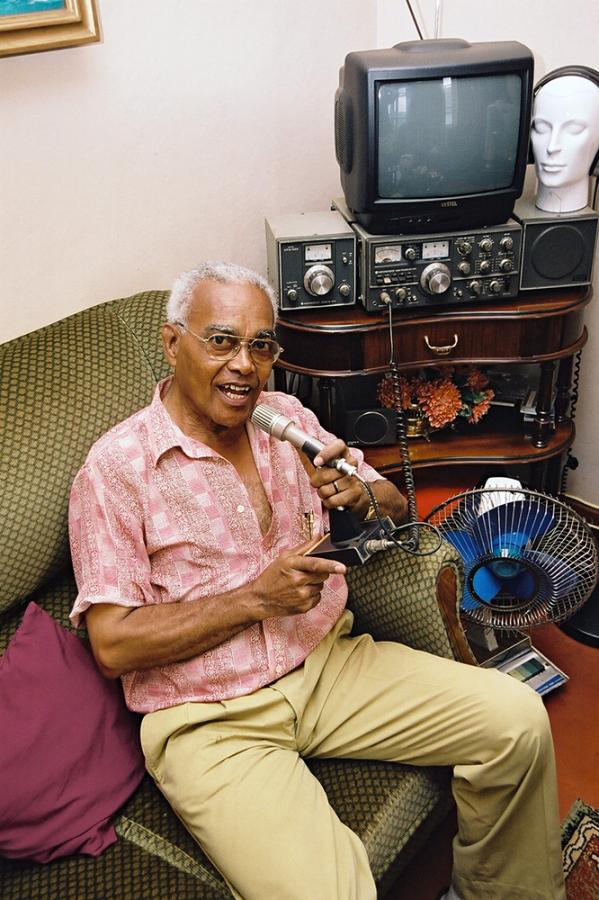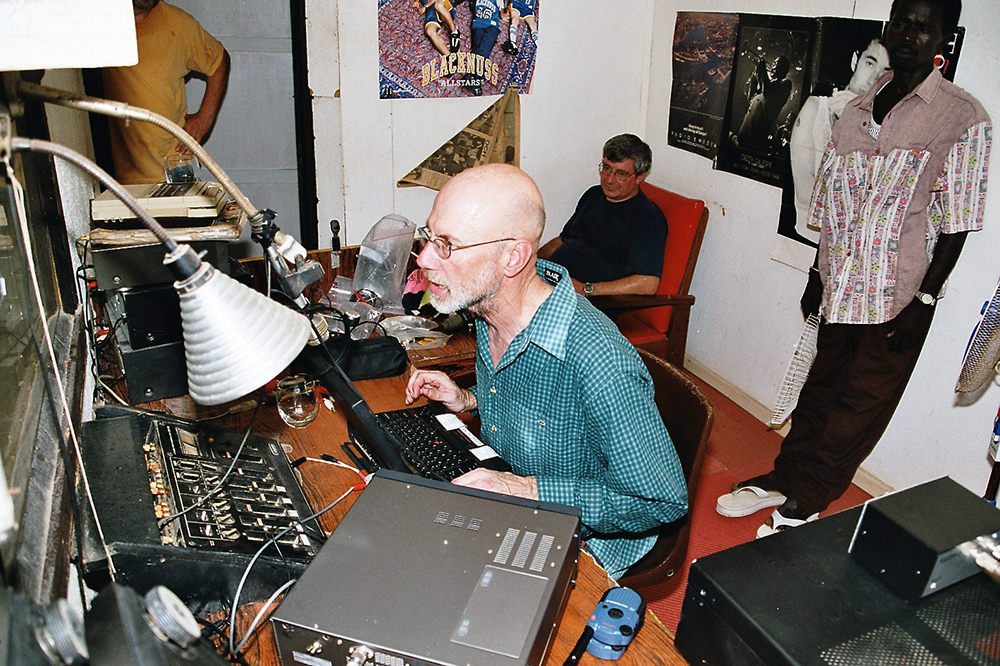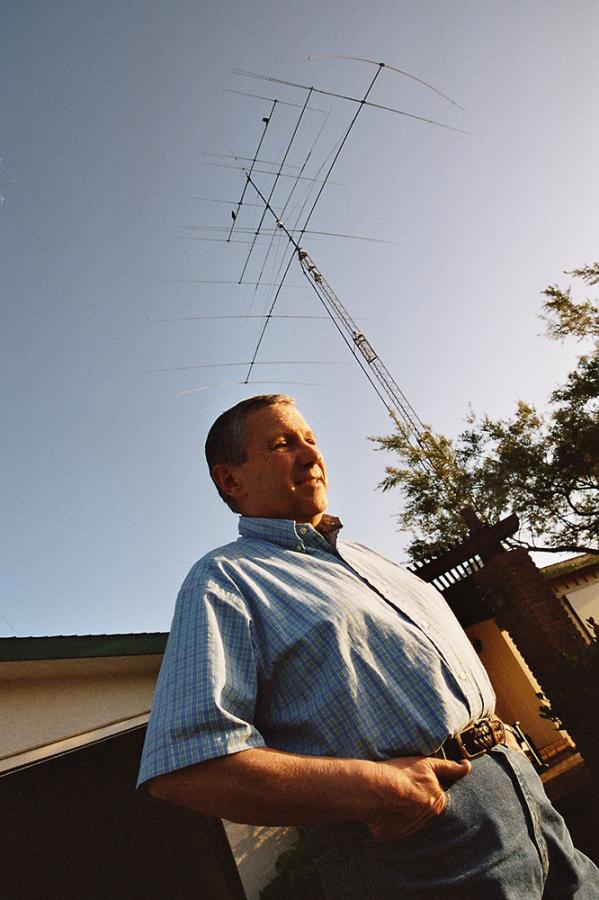Introduction to DX News
This is basic information for people with no prior knowledge of Amateur Radio, DX and Radiosport.
There are millions of people all over the world who, in their leisure time, use the radiowaves as hobby. They are called radio amateurs, in some circles hams, and the hobby is officially specified as Amateur Radio Service, and dubbed as ham radio. It all started more than a century ago when commercial radio users determined those short waves being useless for broadcasting and military purposes. Let them play with these unprofitable frequencies - was the ruling of the day. Things have changed since then. The experimenters and plain fanatics soon discovered that these impractical waves sometimes reached very far. The greater the distance, the more excited they got. Abbreviations were common in the era of railroad telegraph and an appropriate abbreviation was adopted for distant signals on the radio. Undetermined distance became Distance X - viz. DX. A DX in the radio lingo means today a distant station, or its operator. A DX can mean a few miles when microwaves are used, but for the majority of shortwave lovers the term denotes signals from at least another continent.
Today DXing has two meanings - passive and active. A passive DXer is someone who is listening to distant commercial radio stations on both medium and short waves, trying to identify them. The contents of such transmissions is irrelevant for the listener, only the distance and the quality of the reception matter. Medium-wave stations, identified as AM on a car radio, are phased out in many areas. Their transmitting antennas are bulky and the transmitters consume much energy. Sporadically, FM radio stations in the VHF (Very High Frequency - 88 to 108 MHz) band, which run usually less power and have modest aerials, can be received over the distance of hundreds, and even thousands of miles. Identifying such stations can be difficult under irregular circumstances since several transmitters share the same frequency channel, but under normal conditions reach only locally. The English language Wikipedia gives straightforward explanations of basic concepts on the subject of DXing in plain language. Try https://www.wikipedia.org/wiki/DXing for a start.
The passive DXer who is listening only to Amateur Radio stations is called a short-wave listener - SWL, even though it is not limited to shortwaves (10 - 100 meters). The term was coined before the WWII. This is virtually an extinct group.
 Alex Deligianis lives on a small Greek island Lesbos in The Mediterranean.
Alex Deligianis lives on a small Greek island Lesbos in The Mediterranean.
Fascinated by radio since his teens, he monitors wide range of radio spectrum in his
home laboratory. The equipment in front of him allows reception of Very Low
Frequency transmissions directed to submarines in The Indian Ocean. Alex is fully
licensed and can transmit on many bands, but his passion are advanced
technologies.
This website is focused on active DXing. People who also transmit, apart from listening, on selected frequencies of the radio spectrum, need approval from the local government or telecommunication authority. Some countries are liberal and allow almost everybody, who is interested, to transmit on designated radio frequencies. There is however a large number of countries where the local population is not interested in this hobby at all. Most of these countries allow visitors to use their radio stations for shorter or longer periods in their territories, with or without any formalities. A few countries do not allow any Amateur Radio activity, or make it very convoluted. These are often called Most Wanted.
The main problem for DXers is that there are very few permanent Amateur Radio stations in far-off and underdeveloped places. Amateur Radio is very popular in North America and Europe. In Africa, for example, only a couple of countries are well represented on the air. Each year hundreds of radio enthusiasts travel to small islands and poor countries, with their radio hardware and let the Amateur Radio community have the fun of getting a two-way contact with a rare country. These are called DX-peditions. Counting the contacted countries is part of the hobby, competition is tough since even uninhabited territories sometimes count as countries. Actually, the term entity is used now instead of country to avoid confusion.
 Twenty-year old Donata Gierczycka from Poland in the sitting room of Sture
Twenty-year old Donata Gierczycka from Poland in the sitting room of Sture
Henriksson in Mariehamn, Åland Islands between Finland and Sweden, is using his
compact transceiver (receiver and transmitter in one) to contact by radiotelegraphy
her friends back home. Åland Islands count as a separate country - entity - for radio
amateurs.
The active DXer is someone who has both a receiver and a transmitter. All transmitters, used for communication, operating on other frequencies than the free bands, sometimes called Citizens Band or Family Radio Service, need a permit called license. Every licensed transmitter, like every aircraft, has a unique call sign. The call sign indicates the country, and sometimes an area, where the transmitter is located. This is not 100% valid nowadays. A good source of up-to-date information about licensed stations is the database at http://www.qrz.com. More than half a million Amateur Radio operators in the USA hold such permits, and over 2 million in the rest of the world. They are mostly interested in shortwave bands which require relatively small antennas, but cover the whole planet. A new trend on the rise is giving Amateur Radio permits and call signs, in some countries, for VHF and UHF bands only. No need to comply with international regulations regarding global coverage on HF bands. Countries like Japan, Indonesia and Thailand can show huge figures for Amateur Radio licensees, but this is fake news. VHF-only handy-talkie is not Amateur Radio. They look for cheap communication locally, not for global coverage, and are not interested in learning how HF radio works. These radio waves, called HF - abbreviated for High Frequency - can be reflected from layers of particles that exist around the Earth, between 50 and 500 miles above the surface. These layers and the deflections is nothing to be taken for granted. It is a dynamic process, influenced by the Sun and the Earth's magnetism. Basically, you never know if the radio waves will disappear in the outer space or will return to the ground, or more likely, to the sea, since there is more water than land on Earth. This is where the thrill of DXing is. The Internet and cell-phones are easy to use, but are predictable and the transfer of information is out of control for the end-user. Amateur Radio is about understanding what goes on, well, to a certain extent. The scientists have made huge progress in explaining the Sun, the magnetism and the ionosphere around the Earth, but we cannot control them. We know more and more how to use these phenomena and predict some effects, but we can only humbly accept what is generated by the Nature.

Louis Beirao has a small radio transceiver (receiver and transmitter combined in one
unit) made over 40 years ago, in his living room under the TV-set in his home on Sao
Tome island on the Equator in Africa. He used to keep in touch with friends and
family in Portugal and other lusophone countries.
Using the right instruments, we can listen to and communicate with people who use similar instruments. There are three basic units necessary for radio communication in general - an antenna, called sometimes a radiator; a transmitter and a receiver. Shortwave amateur installations are today quite compact and sophisticated, with both the transmitter and the receiver in one unit, called the transceiver. The modern radio technology is based on digital processing of voice and image, so even Amateur Radio is affected. Still, many of radio aficionados of the world use the old-fashioned analogue equipment. Vintage receivers and transmitters, more than 50 years old, still perform well, if kept in good shape. The most critical piece of every radio installation is the antenna. The most expensive and modern radio transceiver will not perform well without a decent antenna. An efficient antenna is the best investment in a radio setup. Sometimes separate antennas are used for reception and for transmitting due to different properties of a particular shape and form. One thing is common - the size of an efficient antenna is corresponding to the wavelength, the longer the radio wave, the larger the antenna should be in order to give away the energy. Many radio amateurs devote much time to construct and experiment with these radiators. It is quite common that the same antenna will perform better in one location than in another; many factors determine the outcome.
A small percentage of experienced and ambitious radio amateurs are involved in contesting, or radiosport. Amateur radio contests are today very common, but only several of them attract large numbers of participants. The formula of a contest is to contact as many as possible stations during a limited time span. Short contests last an hour, but the world-wide competitions run on for 48 hours. Every weekend there are at least a few contests, with some local events during the week. A contest is good for improving one's operating skills and for making plenty of contacts while there are many stations simulaneously on the air. However, comparing the final scores is misleading. There are many factors beyond the control of the operator that affect the overall performance. Some committed contest operators travel to certain spots on the globe, where they can fully exploit their individual artistry as operators. These are called contest expeditions. Simply, some places are better for ionospheric propagation of radiowaves, some radio installations are of better design and more reliable, and so on.
Every four years, in the middle of July, the ultimate competition for Amateur Radio contesters is organised in different locations. This is called The World Radiosport Team Championship, when over 100 eligible operators from the whole world are having equal chances of showing their skills and tactics. The WRTC2018 took place in eastern Germany, the next event is planned for year 2022 in Italy.
 Phil Goetz from New Mexico, USA at the microphone of his Amateur Radio station
Phil Goetz from New Mexico, USA at the microphone of his Amateur Radio station
temporarily installed in a studio of a defunct commercial radio station in Banjul, The
Gambia in Africa. Phil came here with a group of friends to put this small country on
the air as there were no local radio amateurs
Radio reception is today affected by a cloud of man-made electrical noise. Trying to listen on a shortwave radio in a concrete office building down-town is doomed for disappointment. The metal structure will absorb any signals, while the office equipment, lights and elevators produce sharp electrical pulses that a sensitive radio receiver will react to. Cities in general are not DX-friendly. Outdoor antenna restrictions are in force in many industrial countries. The most successful DXers build their stations far from towns and power lines. The recent trend is to remotely control such stations over the Internet or microwave link from the regular residence in town.

Jim McCook of California, USA with his rotary directional antennas behind him. The
tower is 70 ft high and the antennas are home-made or modified commercial
products. He can easily contact radio amateurs in the whole world choosing the right
frequency - or wavelength. The wavelengths are traditionally expressed in meters.
Maybe because radio was basically an European invention (Marconi, Hertz, Tesla).
The Internet is vital for contemporary DXers. The news about operative stations, propagation and solar activity, background information about the installations and operators, technical advice and other facts are readily posted on many portals and individual websites. A well-working real-time information billboard called The DX Summit gives a total picture of current activity on all frequencies assigned to Amateur Radio. The amount of information is incredible, and the abuse of this portal is its weak point. Too many operators announce insignificant events and the true DX is no longer highlighted. Egocentrics declare their presence on the air without any respect for the current propagation conditions, others advertise friends and neighbours for no reason. This site is recommended for the experienced operator who can quickly filter out irrelevant information. The DX News is dedicated to reliable information about DXing and contesting. Here, one can read about present and planned trips to remote places, reports, often illustrated, about active operators and groups. This information source is free to use and ads-free. A bonus is the forum open to everyone interested in exchanging news and tips, as well as soliciting for help, promoting activities in remote and developing countries. Check https://dxnews.com/forum/ and try it yourself.
The Internet offers new services to the DXer, never-thought-of before. The digital technology allows setting up receiving posts which can be controlled by anyone. This can be used to monitor how your transmitter sounds in a distant location. This can be also used for comparing the propagation in different places. Finally, what I recommend to every reader whose curiosity has been aroused by this article, to try passive DXing on the web, in front of your computer at home. Do it before you acquire a traditional radio receiver and hang some reasonable antenna. One suggestion is looking for links to the SDR (Software Defined Radio) receivers on line.
Centuries ago people believed in the aether in which the signals spread through. Now we know that radio waves are basically the same kind of radiation as light, X-ray and others. They just behave in a different way and people know how to use them to communicate with others. However, the shortwave radio is still a mysterious adventure, attracting more and more people all over the world.
Henryk Kotowski, SM0JHF
August 2018


